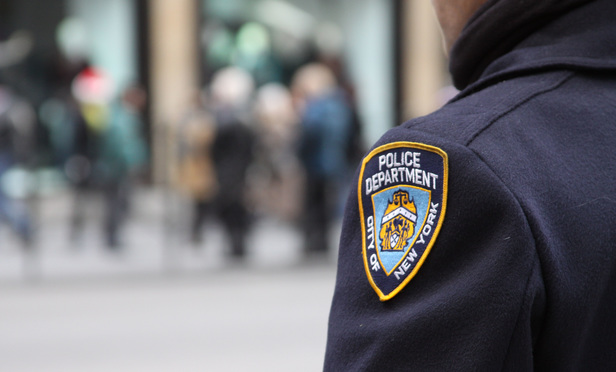
The NYPD and the Mentally Ill
Randolph M. McLaughlin and Debra S. Cohen, New York Law Journal
February 17, 2017

Dave Hosford/Flickr
Recently, a federal court judge cleared the way for a trial in the case of Mohamed Bah, a 28-year-old student killed in his home by NYPD officers after his mother, Hawa Bah, called 911 for assistance to take him to a hospital. Southern District Judge P. Kevin Castel's ruling denied New York City's motion seeking to dismiss claims of unlawful entry and excessive force against the police officers who responded to Mr. Bah's apartment, breached his door and then shot and killed him. Mr. Bah's family alleges that the final and fatal shot to Mr. Bah's head was inflicted at close range while he lay helpless and bleeding on the ground.
The Bah case is just one of many where the response of police officers to calls involving persons in a mental health crisis has come under close scrutiny. The NYPD classified the Bah incident as an emotionally disturbed persons call. According to the NYPD's Office of Management Analysis and Planning in 2016, the Department received 125,508 calls that were confirmed EDP incidents. In many such incidents, a family member's call for assistance with handling a loved one's possible mental health crisis, results in the police forcibly entering the individual's home after being denied entry, discharging Tasers and/or less lethal weapons at the emotionally disturbed person/family member, and then shooting and killing the emotionally disturbed person when he does not immediately comply with police commands.
Unfortunately, such tragic outcomes are far too common because of the failure of local governments to effectively allocate resources to support and respond to people who may be experiencing mental health challenges. Instead, there has been an increased and dangerous reliance on untrained police officers to singularly respond to such situations, without any involvement by professionals trained to understand and communicate with people affected by psychiatric conditions. The danger this imposes on both the public and the police is clear. Nationwide, in 2015, one quarter of the persons shot to death by police officers were exhibiting signs of mental illness. The FBI reports that, also in 2015, 1,710 law enforcement officers across the United States were assaulted while "handling persons with mental illness" and "two were killed doing so." In light of these circumstances, different approaches to handling emotionally disturbed person calls are needed to protect the public and officers who respond to such calls.
Some cities have already recognized and responded to the challenge. In 1987, following the fatal shooting of a young man who suffered from a mental illness, the Memphis Police Department developed and implemented a Crisis Intervention Team (CIT) approach to emotionally disturbed person incidents. Under a CIT model, partnerships are formed between law enforcement, advocacy and mental health professionals to interact in crisis situations using de-escalation techniques that improve the safety of the officers, the public and family members. Many other police departments nationwide have subsequently adopted some form of what has become known as the "Memphis Model." This holistic approach has been adopted by over 2,000 communities in 40 states. It has been adopted state-wide in Maine, Connecticut, Ohio, Georgia, Florida, Utah, and Kentucky.
Inexplicably, New York City has been slow to embrace the CIT approach despite a clear need to do so. A recent investigative report by the city's Department of Investigation and the NYPD Inspector General makes clear that although the NYPD has increased the number of police officers receiving CIT training, few changes have been made to the policies, procedures and practices of the NYPD in responding to calls involving persons experiencing a mental health crisis. Additionally, the NYPD has no mechanism to dispatch CIT trained officers to emotionally disturbed person incidents. No individual or unit within the NYPD has been made responsible for creating a deployment plan, overseeing revisions to current policies and improving data collection and analysis. Only by implementing such reforms can New York City and the NYPD demonstrate a commitment to improve the response of police officers to persons in crisis. While many issues cause tension in community and police relations this shouldn't be one of them. Bringing together mental health advocates, police unions, families that are pushing for policy reform and police reform groups can only help in how these crisis situations are handled.
Without system-wide reforms, the failure of the NYPD to implement fully a CIT approach to emotionally disturbed person calls will continue to lead to disastrous consequences. The fatal shooting by NYPD officers of Deborah Danner, a 66 year-old African American woman with a history of schizophrenia in 2016 is just the latest example of how failing to create adequate policies and train police officers can lead to unnecessary deaths. The NYPD has been confronting this issue since the deadly shooting by police officers of Eleanor Bumpurs in 1984. It is time that they take proactive steps to stop the violence against residents with mental illness and not merely pay out when victims die. With the comprehensive adoption of the CIT approach, we may be able to avoid more tragic deaths such as Mohamed Bah's.
Randolph M. McLaughlin and Debra S. Cohen are co-counsel to the family of Mohamed Bah and are co-chairs of the civil rights practice at Newman Ferrara.
